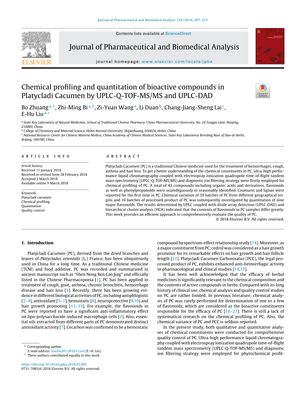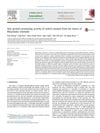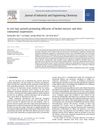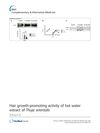Chemical profiling and quantitation of bioactive compounds in Platycladi Cacumen by UPLC-Q-TOF-MS/MS and UPLC-DAD
May 2018
in “Journal of Pharmaceutical and Biomedical Analysis”

TLDR Researchers identified new compounds in Platycladi Cacumen and found variations in its flavonoid content, which could aid in its quality control.
In 2018, researchers conducted a study to analyze the chemical composition of Platycladi Cacumen (PC), a traditional Chinese medicine used for treating hair loss among other ailments. They identified 43 compounds using UPLC-Q-TOF-MS/MS, including two compounds, coumarin and lignan, reported for the first time in PC. Additionally, they quantitatively analyzed nine major flavonoids across 39 batches of PC from different locations and 10 batches of processed PC using UPLC-DAD and hierarchical cluster analysis, finding significant variations in flavonoid content. The study established a method with high precision and accuracy for quantifying flavonoids in PC, which could help in quality control of this herbal medicine. The method showed good linearity, low detection and quantification limits, and high recovery rates. The analysis indicated that processing PC leads to chemical changes, with quercitrin being the most abundant compound in raw PC and flavonoid aglycones predominating in processed samples. The study was supported by the National Natural Science Foundation of China and provides a scientific approach for the quality control of PC.
View this study on sciencedirect.com →
Cited in this study

research Hair growth promoting activity of cedrol isolated from the leaves of Platycladus orientalis
Cedrol from Platycladus orientalis leaves may promote hair growth effectively, especially in female mice.

research In vivo hair growth-promoting efficacies of herbal extracts and their cubosomal suspensions
Some herbal extracts, especially when used in cubosomal suspensions, were as effective as Minoxidil in promoting hair growth.

research Hair growth-promoting activity of hot water extract of Thuja orientalis
Thuja orientalis hot water extract may help hair grow by starting the growth phase and improving hair follicle development.